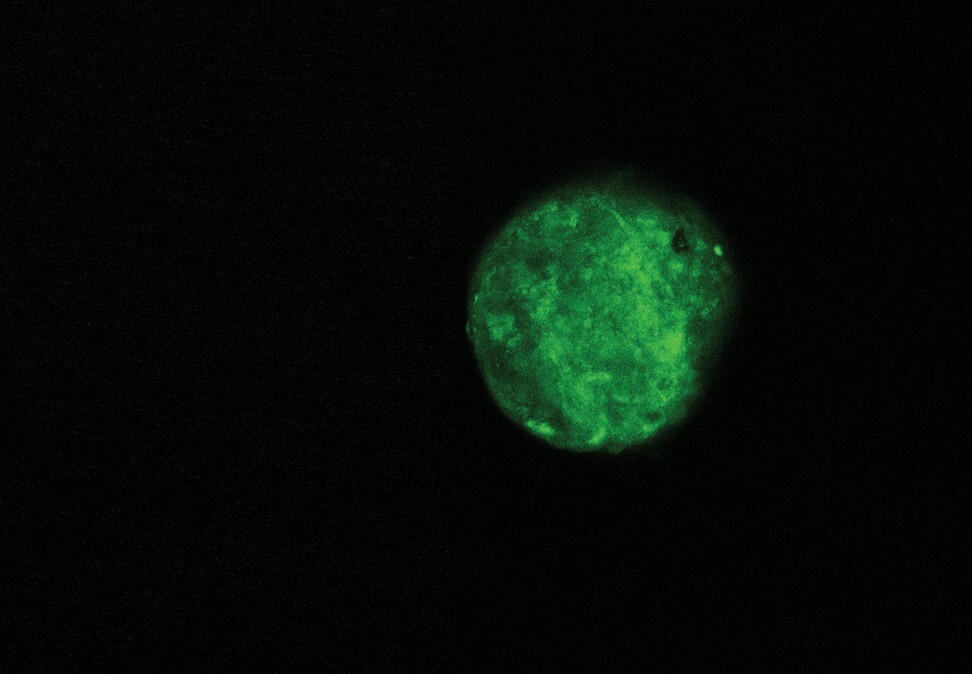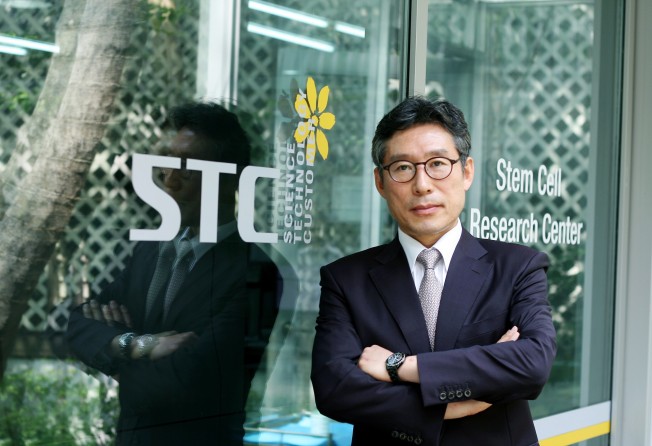
STRI perfects stem-cell pluripotency to enable 3D printing of human organs
- STRI relies on in-house specialists and experts in agricultural life sciences, lifestyle sciences, new drug development and gene research

Country Business Reports interviews and articles by Discovery Reports
Within five years, the global stem cell market will exceed US$15 billion, prompting industry players to intensify research collaborations, and mergers and acquisitions to develop innovative solutions that could eradicate incurable diseases such as cancer or improve the life expectancy of ageing populations. In this highly competitive market, South Korea’s pioneering STC-Stem Cell Treatment & Research Institute (STRI) stands out with its breakthrough technology perfecting the pluripotency of stem cells.
“One of our most recent achievements is in oncology,” says Lee Kye-ho, chairman of STRI. “We have proven that stem-cell treatment is effective against cancer and brain diseases, and that humans can live up to 140 years old. This is all based on scientific evidence and confirmed by the Seoul National University (SNU) Hospital.”
These advancements are a huge vindication for Lee. When he established the STC Life Science Research Institute in 1989, his goal was to prove the very core of his beliefs: that medical treatment should be done at the cellular level. Officially, STC stands for Science, Technology and Customer, but to the STRI founder, it also connotes Soul, Treatment and Cell in line with his vision.
“Thirty years ago, when we established the lab, our goal was to develop cell-repairing treatments, hence the name. Back then, I was giving lectures on alternative medicine. So many people called me crazy for preaching stem-cell therapy, and no one believed me,” Lee says.
At times taunted by peers who viewed his work as medical quackery, STRI’s founder pushed on for more than two decades, hardly leaving the lab to focus on the research.
“My research can be categorised into three parts. First, we aim to make the human body healthy at the cellular level and what we have achieved so far with our stem cell is an extended lifespan with healthy condition of up to 140 years. The second goal is to generate body tissues and organs such as a heart, a kidney or a liver, also new limbs for those with amputated limbs. The last part, though certainly not the least, is to fight cancer using our stem cells,” Lee says.
World’s first iPS breakthrough
The breakthrough came in 2013 with the newly Elicited Pluripotent stem cell without side effects, better known today as nEPS, which filled a huge void with its potential for immediate and widespread use among cancer and other terminal patients who would otherwise run the risk of immune rejection or cell mutation. STRI uses mesenchymal stem cells (MSC) to induce pluripotency, and without any artificial manipulation. This means it can use autologous and allogenic sources for pluripotency. STRI has registered its patent for nEPS in more than 145 countries after compiling substantial proof of its efficacy in preventing tumours.

Moreover, customised stem cell treatment and mass production are enabled with nEPS. Aside from its 470 patent applications across multiple jurisdictions, STRI has 265 patents registered in South Korea, the United States, Israel, the European Union, Russia, Singapore, China and Japan, among others.
We have proven that stem-cell treatment is effective against cancer and brain diseases, and that humans can live up to 140 years old
“Our stem cell is free from side effects, which means it does not lead to tumour or cancer occurrence,” Lee says.
Successfully differentiated into hepatocytes, pancreatic beta cells, neurocytes, T-cells, osteoblasts, chondrocytes and adipocytes, nEPS enables the generation of all human tissues and organs. This makes it easy to customarily regenerate skin cells, bones and cartilage. STRI has succeeded in growing kidney cells, brain cells, pancreas, blood stem cells, eyes and stomachs. Through a collaboration with the University of Michigan, a beating heart has also been created using nEPS.
“STRI has the best ingredients to generate body tissues and organs, while the University of Michigan has the 3D printing technology needed to generate a heart. So far, our collaboration has produced a mini-heart that palpitates like the human heart,” Lee says.
Similar collaborations are continuing for pre-clinical research on Alzheimer’s disease, liver cirrhosis, diabetes and cancer. SNU Hospital is the research partner for nEPS studies involving liver and pancreatic disorders.
Energy Water
A crucial factor in STRI’s technology is the use of Energy Water, which is non-ionised water that suppresses entropy expansion and helps nEPS to extend human lifespans. Knowing that water is essential to maintain life as it makes up about 70 per cent of an organism, STRI seeks to recover the natural biological state of the body through the electromagnetic power and addition of inorganic ions in Energy Water.
STRI’s research has shown that Energy Water promotes recovery from injuries, activates the body’s normal ability to identify and resist harmful elements in the environment, boosts nutrient balance, strengthens immunity, inhibits skin ageing and activates gut microorganisms.
With such broad efficacy, Energy Water is applicable to various industries. In agriculture, for instance, it is used to recover polluted soil, purify dirty water and make plants grow faster. This impacts the food chain on many levels. Recovered soil makes livestock healthier and more resistant to diseases. More crops can be harvested in farms. With fewer chemical contaminants, fisheries and aquatic resources are no longer distressed.
Energy Water is also the active ingredient in cosmetics products manufactured by STC Nara, an affiliate of bBHC which is focused on the cosmetics business. Celgen and Cell97.7 have become top-of-the-line cosmetic brands because Energy Water perfects the products’ emulsifying effect. As they are easily absorbed in the skin, bBHC products allow the skin to regenerate naturally. This promise to bring energised hydration to the skin made Celgen and Cell97.7 instant bestsellers upon their launch in the US in the late 1990s. Containing no artificial ingredients, bBHC cosmetics prevent skin problems by restoring natural balance, rather than providing instant results through overstimulation. The products are designed to nurture the facial complexion to a clear and translucent state and the body skin to an elastic, soft and healthy state by realising the self-regeneration mechanism. “Celgen and Cell97.7 are high-functioning cosmetics backed by skin science and stem-cell conditioned media that are the most expensive to produce in the world today,” says Oh Min-sun, CEO of bBHC.
Ready for global expansion
Also the unit that promotes collaborative research opportunities with international research centres and multinational pharmaceutical companies, bBHC aims to globalise STRI’s stem-cell research and singular approach to cell therapy. This global expansion is backed by STC Nara, which operates a CGMP- and ISO-certified facility and has manufactured high-end cosmetics for 30 years now. STC Nara also provides contract manufacturing services for a wide range of products including food supplements, high-functional cosmetics, household items and quasi-drugs.
“My priorities are to expand our reach in the US and launch the Celgen and Cell97.7 brands in the Middle East starting with Dubai and to more markets in Asia, especially Japan, Hong Kong and mainland China,” Oh says.
From product planning to the supply of finished goods, STRI relies on in-house specialists and experts in agricultural life sciences, lifestyle sciences, new drug development and gene research. For instance, STRI is a leading expert in the ageing-related p62 gene action mechanism and anti-ageing product development.
Down-ageing is core to the two. Much like alternative medicine seeks the root cause of a disease rather than focusing on symptoms, down-ageing promotes holistic healing and recovery by treating the underlying deficiency or performing targeted cell repair. This restores physiological balance, allowing the body to regain vitality and support longer lifespans.
Celgen and Cell97.7 are high-functioning cosmetics backed by skin science and stem-cell conditioned media that are the most expensive to produce in the world today
“We have compiled evidence that our stem cells can prolong human life up to 140 years,” Oh says.
STRI’s treatment experience using MSC involves young and old patients and has produced consistent results. In the case of a young boy, height increased by 7cm three months after he was injected with stem cells. For elderly patients, STRI measures their telomeres, the compound structure at the end of each chromosome that protects DNA, and has found evidence of down-ageing or longer telomeres after MSC injections.
When it comes to debilitating diseases, STRI’s breakthrough is just as profound. A wide range of debilitating diseases is curable today given its achievements since the discovery of nEPS seven years ago.
Cell replacement therapy is now more viable for diabetes, cardiovascular diseases, Parkinson’s disease, blood cell disease, kidney disease, certain types of liver disease and cancer. Regeneration of damaged organs and the treatment of nervous system and autoimmune disorders, along with nervous system, muscle and bone diseases, are likewise among the exciting possibilities with STRI preparing the clinical trials for nEPS slated for this year.
As it celebrates its 30th anniversary, STRI invites global pharmaceutical companies and long-term investors to help realise the full potential of its stem-cell technologies for the greater good of mankind.
“It usually takes about 20 years to commercialise scientific discoveries. Regenerative medicine takes more time because the human microbiome is complex, but we have accelerated the trajectory with our successful generation of all tissues and organs of the human body. This means the technology is mature enough to eradicate all incurable diseases of the world,” Lee says.